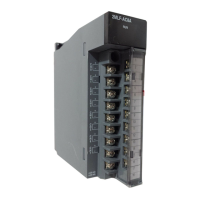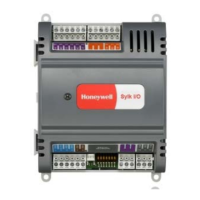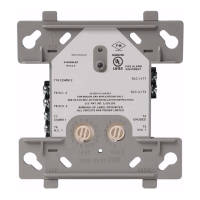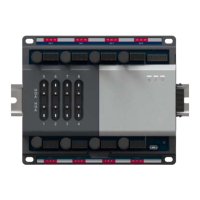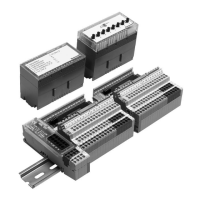Installation and Operations Guide
|
ACM-VLX/VLX/EXP/AXM
58
© Honeywell. All Rights Reserved. LT-VLXEXPAXMIOG Rev. 01
VLX/ACM-VLX data, DDC, and automation
This topic provides information about using VLX/ACM-VLX data for DDC
programming and automation. It covers the BACnet objects and properties
available in the VLX/ACM-VLX for programming and their behavior. This
information is useful for DDC programmers, integrators, and those who develop
displays and automation systems with Compass software.
The topic assumes a fundamental knowledge of DDC programming and
automation in the Compass environment. See the BACtalk Programmer’s Guide
and Reference (LTBT-TM-PRGRMR) for comprehensive DDC programming
information, including a DDC function reference.
See “Appendix F: BACnet object and property reference” on page 80 for a list of
objects and properties.
Identifying input and output objects
The VLX/ACM-VLX and its EXPs/AXMs appear to the BACnet system as a
single device. All BACnet objects and properties are associated with the device
instance of the VLX/ACM-VLX. VLX/ACM-VLX automation features and
DDC reference VLX/ACM-VLX operational data as BACnet objects and
properties.
An EXPs/AXMs address determines the range of objects and properties in the
VLX/ACM-VLX associated with it. For EXP/AXM e (where e is the address
from 0–7 set with DIP switches on the unit), all objects that pertain to that
EXP/AXM are in the range e000–e999 in the VLX/ACM-VLX.
EXP/AXM configurations vary, so the VLX/ACM-VLX reserves a range of AIs,
AOs, BIs, and BOs based on the maximum that an EXP/AXM configuration will
support. Each EXP/AXM has 24 of each object type reserved for it. Each object
instance corresponds to the terminal identifier (IN-n) on the EXP/AXM and the
EXP/AXM address.
For example, AO-5 on EXP 7/AXM 7 connected to a VLX/ACM-VLX with
device instance 800 is identified as Device 800, AO-7005. The same output on
EXP 0/AXM 0 is identified as Device 800, AO-5.
Notational conventio ns fo r VLX/ACM-VLX data
Because the VLX/ACM-VLX and EXPs/AXMs appear to the BACnet system as a single device,
a numbering scheme that incorporates the EXP/AXM address and the input ID is necessary. For
AIs, BIs, AOs, and BOs — and the configuration and feedback values associated with them —
this guide uses the following variables:
e = The single-digit EXP/AXM address, which ranges from 0–7. This is set with DIP switches on
the EXP/AXM.
nn = The two-digit input identifier, which ranges from 0–21 and corresponds to the IN terminal
number on the EXP/AXM.
Example: If the variable object identifier AI-e0nn is shown, AI-3018 refers to IN-18 on
EXP 3/AXM 3.
An
time an ob
ect a
ears without a
ro
ert
s
ecified
the
resent-value
ro
ert
is assumed.

